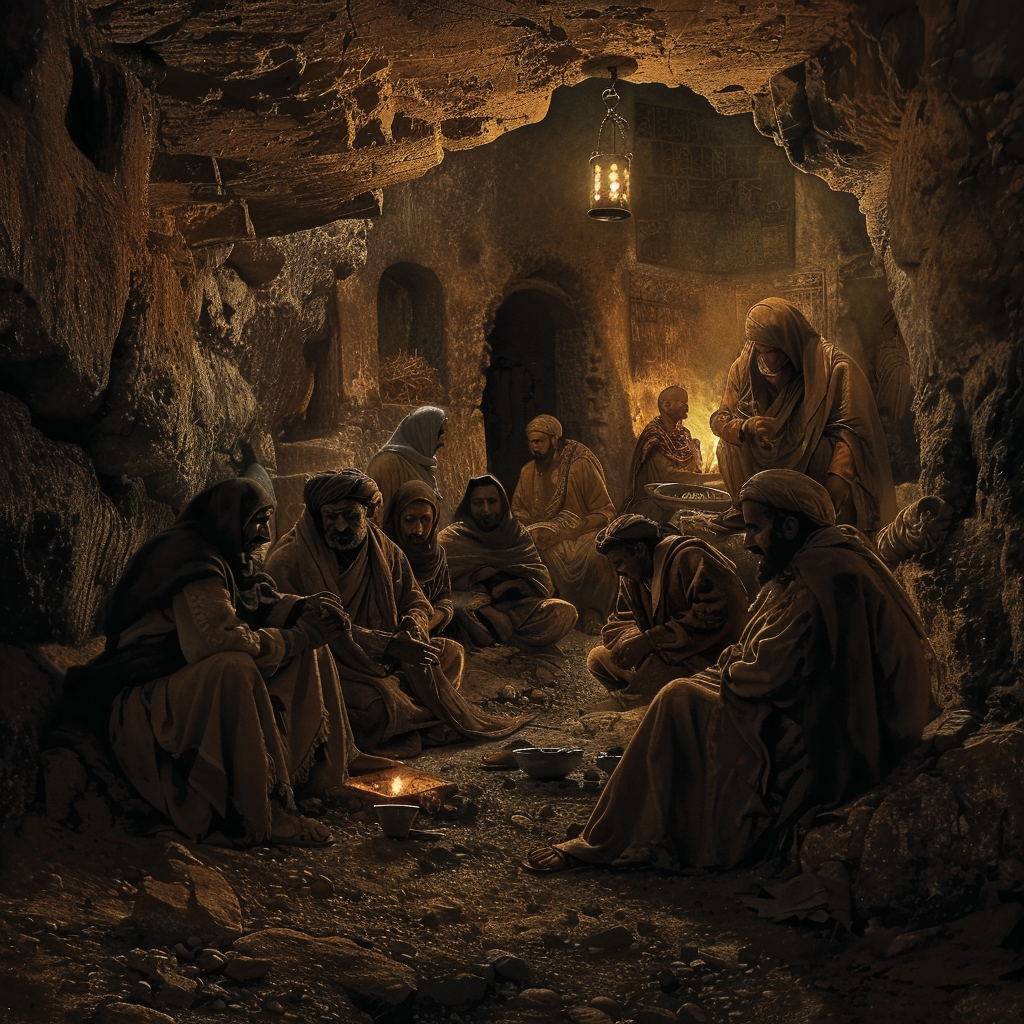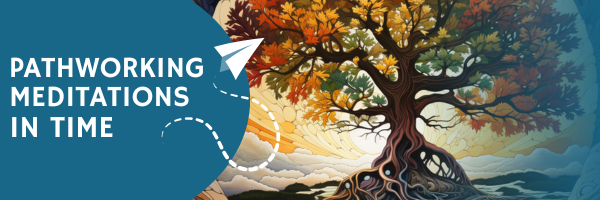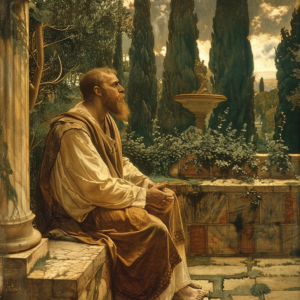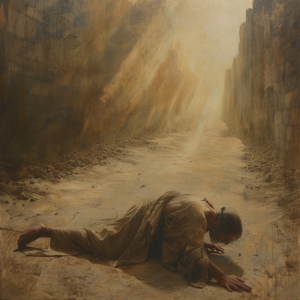
In the context of Miriam’s story and the broader narrative of the Israelites in Egypt, the “covert rituals” refer to the practices and traditions maintained quietly by the enslaved Israelites as they yearned for deliverance from their oppressors. These rituals were religious observances and acts of cultural and spiritual resistance, preserving their identity and faith amidst harsh subjugation. Here’s a deeper look into what these might have included:
1. Secret Prayer Meetings
Given the oppressive environment, the Israelites likely held discreet prayer gatherings. These would have been small, clandestine meetings where they prayed for deliverance and strength and preserved their faith and culture. Such meetings would have served as crucial support networks, reinforcing communal bonds and offering spiritual solace.
The Israelites, amid their grueling schedules, would find moments for clandestine prayer meetings. These gatherings, often held under the cover of darkness or in secluded areas, served as spiritual refuges and reinforced communal bonds among the slaves. They would share encouragement, strengthen their collective memory of God’s promises, and pray for strength and deliverance. These meetings were crucial in maintaining a sense of hope and purpose despite the oppressive circumstances.
2. Preservation of Oral Traditions
In an era where written texts might not have been accessible to all, especially slaves, the oral transmission of stories, laws, and promises would have been vital. Elders would recount tales of their forefathers, promises of land destined for them, and the covenants made with their God, ensuring that each new generation remembered their heritage and the hope of liberation.
Oral traditions played a pivotal role in preserving the history and laws of the Israelites. Elders would pass down stories of Abraham, Isaac, Jacob, and Joseph, keeping alive the narrative of their covenant with God and the land promised to their ancestors. This oral preservation ensured that every generation knew their heritage, understood their identity as God’s chosen people, and kept the hope of returning to their promised land alive.
3. Stealthy Observance of Religious Rites
Specific religious observances would have continued in whatever modified form possible under the watchful eyes of their Egyptian taskmasters. This might include the covert observance of the Sabbath or other significant days in the Israelite calendar, adapted to the constraints of their captivity to avoid detection and potential punishment.
Despite the risk of punishment, the Israelites might have continued to observe certain religious rites in secret. This could include quietly marking the Sabbath or covertly celebrating Passover. Such observances were likely simplified and adapted to avoid detection but served as profound acts of defiance and faith, reaffirming their allegiance to God and cultural laws.
4. Hidden Symbols and Charms
Israelites might have created and hidden small symbols or charms that held religious significance—perhaps small carvings, discreetly woven patterns in their clothing, or other personal items that reminded them of their identity and faith. These items would serve as subtle yet powerful reminders of their beliefs and hopes.
The creation of hidden symbols or charms allowed the Israelites to carry physical representations of their faith with them. These might include small fabric tokens hidden in clothing, discreet jewelry featuring Hebrew symbols, or other personal items imbued with spiritual significance. These items acted as subtle reminders of their faith and a silent protest against their captors’ attempts to strip them of their identity.
5. Teaching and Transmission of Skills and Crafts
Teaching their children their ancestors’ skills, crafts, and religious practices was another form of covert ritual. By passing on these traditions, the Israelites not only kept their culture alive but also instilled a sense of hope and future deliverance in the younger generations.
Parents and elders took it upon themselves to teach the younger generations the skills, crafts, and religious practices of their people. This transmission was crucial for cultural preservation and instilling a sense of normalcy and continuity amidst their turbulent lives. This education ensured that skills necessary for survival and religious practices were kept alive, helping to maintain a sense of community and shared identity.
6. Songs of Lament and Hope
Much like Miriam’s later song of deliverance, songs played a significant part in the Israelites’ covert rituals. Before their liberation, these would have been songs of lament—mourning their plight—but also of hope, recounting God’s promises of deliverance. These songs would be vital in preserving their narrative and instilling resilience.
Songs were a vital expression of the Israelites’ spirit, weaving their current sufferings with the promises of future deliverance. These songs, often sung quietly during their labor or in hushed tones during gatherings, were a blend of lamentation for their present condition and hopeful anticipation of divine intervention. They served as a cathartic expression of their plight and a mnemonic device to remember their history and prophecies.
7. Rituals of Solidarity and Support
Finally, simple acts of solidarity and support among the enslaved people could be considered covert rituals. Sharing food, care for the sick and elderly, and mutual support in times of punishment would reinforce community bonds and keep the spirit of hope alive.
Simple yet profound rituals of solidarity—such as sharing scarce resources, comforting the bereaved, or aiding the sick—fostered a strong sense of community among the Israelites. These acts of kindness were fundamental displays of their commitment to each other under the law of “love thy neighbor,” reinforcing their moral and ethical codes in a setting that continually sought to dehumanize them.
These covert rituals carried out in the shadows of slavery, were acts of quiet defiance and hope. They nurtured a collective spirit that would one day culminate in the dramatic escape from Egypt, led by figures like Moses and supported by the enduring faith of leaders like Miriam.
No tags for this post.



